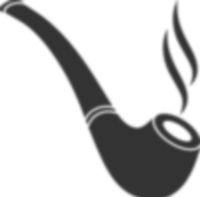To this Blog’s Sunlit Uplands

UPDATED: January 15, 2022
In the spirit of this Advent season, True Writer blog has a newly enlarged purpose.
The site had aimed to be a professional development tool for writers. Specific though the goal was, I found it confined me, as if I wore a dress shirt an inch too tight at the collar.
I prefer, and think you readers prefer, reading and commenting on not only technique and style, but also content.
The site will continue to explore journalism. It will also branch out to consider good popular art, particularly books, as well as television and movies, through the lens of virtue and character. Does the writer show vice and virtue in action? Can the characters teach us anything about leading morally good lives?
Some definitions are in order.
By popular, I mean middlebrow art, that which prizes content and style over form. Think of the writer Joan Didion’s reporting and essays from the 1960s and ‘70s, the first two The Godfather films, David Halberstam’s The Best and the Brightest, Tom Wolfe’s The Right Stuff, Michael Mann’s “Heat,” Michelle McNamara’s book on the Golden State Killer, the Coen brothers’ “No Country for Old Men” and David Fincher’s “Zodiac,” The Wire, the Sopranos, Breaking Bad, and True Detective.
Middlebrow Art as Entertaining and Educational
Middlebrow art is accessible, direct, unmediated, technically competent, entertaining but also educational, and connects the head to the heart. This is the art of the city street, the playground, the corporate office, and the home. Often, middlebrow art is associated with the tastes and values of the middle class or bourgeoisie. Status anxiety is a persistent theme, but it’s not the only one. Race, religion, ethnicity, social class, region, and relationships are important, too.
Middlebrow art has two chief competitors.
One is highbrow art.
Highbrow art prizes form and style over content, so it’s all about stylistic experimentation, disruption, and esoterica. Today this is the art of the fashion show, university, and art house. Highbrow art can be popular; witness the detective novels of Edgar Allan Poe, who invented the form. Typically, highbrow art is so avant-garde only a small minority can or would want to appreciate it.
The other chief competitor is lowbrow art.
Lowbrow art appeals to the heart rather than the head. We may find it amusing and our hearts moved but to our brains, it’s absurd. Think the Kardashian’s, the novels of Danielle Steel, and most Star Wars movies. (In his well-known 1960 essay, “Masscult and Midcult,” critic Dwight Macdonald excoriated masscult and midcult as non-art and even anti-art corrupted by commerce. These art forms might be described more accurately as lowbrow).
Good as in Aristotle and Aquinas, Not Marx
By good, I refer to morals and ethics rather than aesthetics. I mean virtuous, as in the four cardinal virtues:
Prudence
Temperance
Fortitude
Justice
“Character” is the popular term for these values. Good middlebrow art should help teach or remind us how to live in an Aristotelian rather than Kantian or Marxian way.
The great George Orwell disagreed. Sincerity rather than ethics distinguishes good from bad art, he said in his 1940 essay “Inside the Whale,” citing Poe’s short stories and novels as examples of great art because they reflected the standpoint of an insane person. I say this is short-sighted. Poe’s macabre works are sincere, yes, but their value lies in showing the effects of abandoning virtue in favor of one’s own whims and desires.
I believe in virtue. It has brought well-being and happiness in my life, and cultures worldwide have found the same. To the brilliant Protestant theologian Reinhold Niebuhr, it was key to lasting personal and social change. “Virtue is the truth that breaks the cycle of excessive optimism and disillusionment,” social critic Christopher Lasch wrote by way of describing Niebuhr’s worldview. “It asserts the goodness of life without denying the evidence that would justify despair.”
While virtue ethics fell out of favor in the hippie 1960s and ’70s and the yuppie 1980s, it enjoyed a brief resurgence in the 1990s, when I studied it as a University of Chicago graduate student, and it retains influence on popular blogs and TV shows today. One way to read “The Wire,” “The Sopranos,” and “Breaking Bad” is as an extended meditation on the consequences of following or breaking natural law.
Books Can Beget Vice as Much as Virtue
As for art, I am a believer in books, the printed page, newspapers, and magazines. Not only do they offer more depth than other mediums. They also have fewer distractions.
However, I am no bibliotherapist. Books are a means, not an end. Books alone can make people virtuous. In fact, the opposite can be true. As the historian Eric Cummins wrote in his history of California’s radical prison movement, from the 1950s to the early 1970s, high-profile convicts–Caryl Chessman, George Jackson, et. al–used books to mislead the public about their crimes. Read more good books is my position. Reading more books alone is not.
I warn you of my ignorance and bias. I have not seen dozens of well-regarded movies nor read hundreds of outstanding books. However, I have reviewed books for magazines and alternative weeklies and written a book myself.
(I come from fine stock! My uncle Guy is the nation’s pre-eminent fine-art printer and my uncle Mark an authority on all things Bruce Springsteen. My uncle Jay was such a first-rate college football referee that he officiated at a national title game. My sisters Anne and Sarah are reputed artists in their own right).
I hope you like the blog’s new purpose and will offer your own examples of good pop art. What do you think?
Please reply in the comments box below.

Looking forward to the new plan!
This post gives a really good sense of your overall sensibility, Mark! Nice job!
Thanks!